People
The Art World at Home: Carolina Alvarez-Mathies Is Trying to Supercharge Her Museum While Settling Into Her New Dallas Townhouse
Dallas Contemporary's new deputy director tells us about how she's taking on her new role.
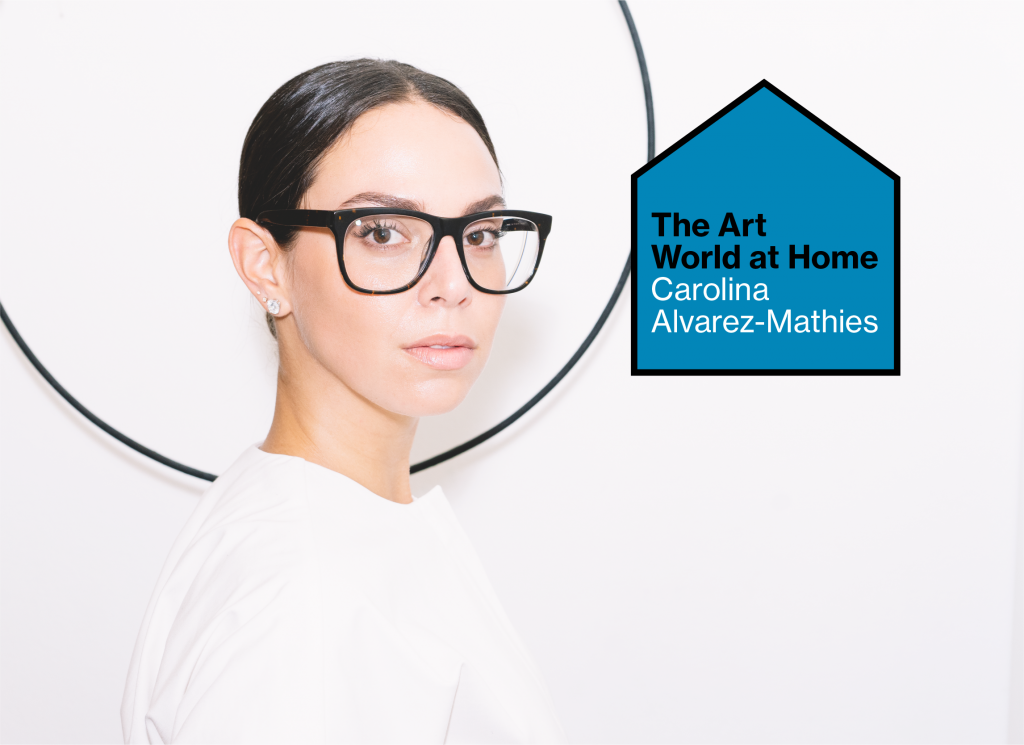
Dallas Contemporary's new deputy director tells us about how she's taking on her new role.

Sarah Cascone

The art world is slowly coming out of lockdown, but many decision-makers and creatives are still staying close to home. In this series, we check in with curators, historians, and other art-world professionals to get a peek into their day-to-day.
When she was tapped to join Dallas Contemporary as the museum’s deputy director in November, Carolina Alvarez-Mathies was excited to return to the area, where she had attended college at Texas Christian University.
A native of El Salvador, she was joining the museum from New York, where she had spent three years running external affairs at Creative Time, following a two-year stint in communications at El Museo del Barrio.
But just as Alvarez-Mathies was beginning to put down roots (she bought a townhouse in March), Dallas Contemporary was forced to close indefinitely. And although many Texas institutions are already back in business, DC will not reopen until 2021.
As the museum’s staff slowly resumes working on site, we caught up with Alvarez-Mathies about her passion for Salvadoran contemporary art, party planning in the age of social distancing, and the perils of dining out in a face mask.
What are you working on right now?
We have recently launched a new online store. A few months back we ran a highly successful print sale featuring a work by Yoshitomo Nara, who has a show coming up with us in 2021.
The process made us realize that we were ready to scale up and formalize a new revenue stream for the institution. It’s been an exciting process to undertake in-house. We set up a small photo studio in the museum to shoot the products, have a socially distant assembly line for packing and shipping, and are making final design tweaks. Initially, it will be a place for catalogues and limited-edition prints. We will soon be launching more bespoke items.
Aside from that, we are rethinking the layout of our digital hub, #dcfromhome, and giving a new online home to our robust educational content for all ages. We’re launching a 2.0 version of those projects in early September along with two new fall digital exhibitions.
Our parking lot has also gotten a major makeover while we have been closed, and a drive-in fall party is in the works.
Our reopening strategy is centered on how we can best support both our artists and staff. We wanted to figure out the best way for the artists we work with, both in the Dallas community and internationally, to dream big. We are also looking forward to starting 2021 strong with four solo exhibitions by artists Ariel René Jackson, Yoshitomo Nara, Paolo Roversi, and Liu Xiaodong.
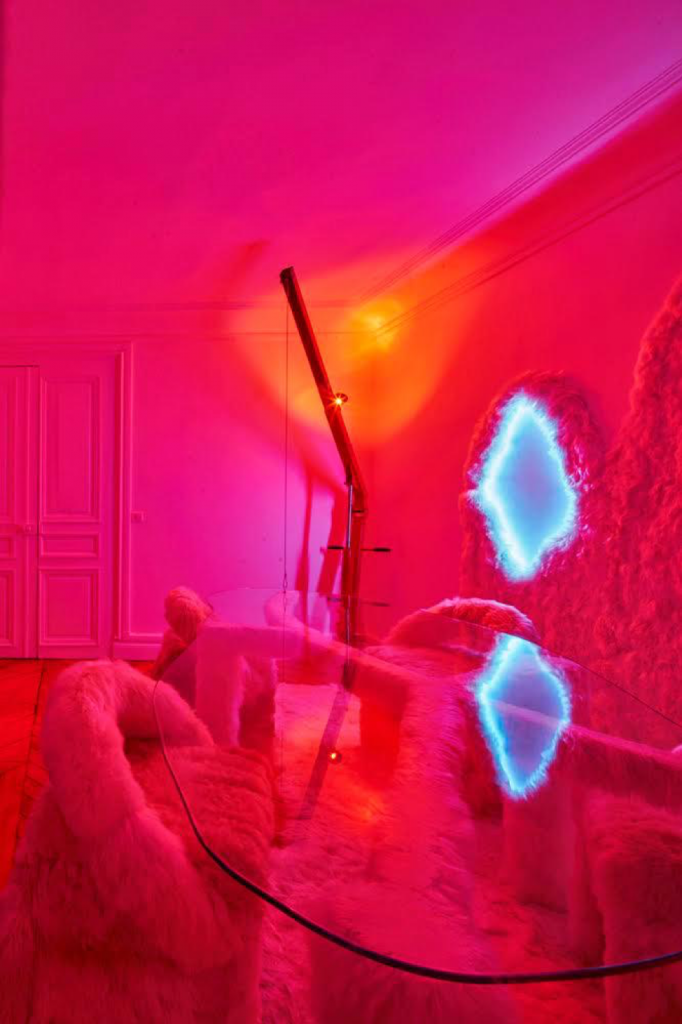
José Castañal’s dining room in Madrid, designed by Guillermo Santoma. Photo by Jose Hevia.
Walk us through the when, where, and how of your approach to this project on a regular day.
I started going into the museum a few days a week recently. Peter [Doroshenko], our director, and I sit at opposite ends of our conference room and tackle our objectives from there. Other members of our team also come in a few days a week. We stagger it so it is a small number of us at a time. It’s been so nice to slowly start seeing everyone again.
We keep a white board with our major milestones for 2020/2021. We know what we need to achieve, it’s just our course of action to get there that gets tweaked a bit more often as we navigate the global health crisis and reimagine what it will look like to welcome visitors back into the museum.
Zoom is still a major part of my schedule. Smaller team meetings are held there and so are our all staff’s. Plus, it’s a great way to keep in touch with colleagues across the globe with travel being limited.
What is bothering you right now (other than the project above and having to deal with these questions)?
Oh, the many unanswered questions—though that also excites me. For better or worse, my personality is quite action oriented, so instead of focusing on what bothers me, I try and focus on what opportunities these past months have brought about.
One of the main “concerns” right now professionally is what does the future of philanthropy and museums look like? How can we create better models for operating in a more sustainable manner and how can we be more responsive to support both artists and audiences in a more timely manner?
I had a really interesting discussion with my dear friend Josh Wyatt, CEO at Neuehouse, recently. He has such a brilliant outlook on the future of members clubs and hospitality. I am focusing on that industry a lot (also fashion, food and beverage). So many parallels to draw from. I see a lot of room for collaboration for those sectors. Nurturing and curiosity are two words that I am bouncing around at the moment.
What was the last thing that made you laugh out loud?
Had just wrapped a workout and desperately needed food. In the rush to consume the acai bowl I had in front of me I forgot to take off my mask. The spoon landed right on it—it was everywhere! Yes, I was in public. I laughed out loud and so did the gentleman across the room who saw the whole thing go down.
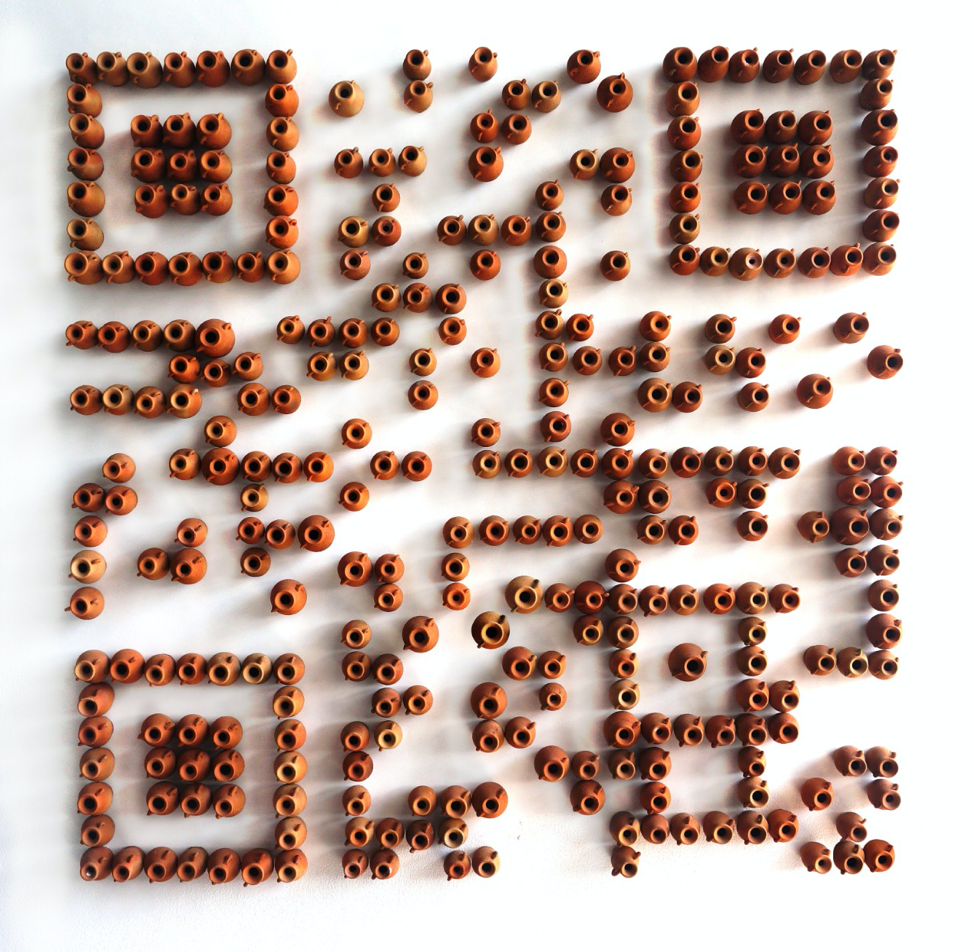
Orlando Villatoro, Human Code. Photo courtesy of the artist.
Are there any movies, music, podcasts, publications, or works of art that have made a big impact on you recently? If so, why?
QR Codes. They seem to be experiencing a major comeback as the answer to COVID signage needs. I’ve always found them a fascinating means of “digital transportation.” Orlando Villatoro, a Salvadoran artist has been working with them for a few years now in a series titled “Human Code.” He utilizes found objects, typically organic materials, to compose them.
I saw one in his studio last year made up of crystals. When scanned, it takes you to a Google map of sites where the artist has performed a type of acupuncture on the city of San Salvador, thus healing its wounds. His use of them always stuck with me, especially now as a sort of reminder that possibilities are endless when it comes to utilizing digital technology to incentivize or reignite in person connectivity.
His latest piece of the series is a QRcode made of miniature ceramic pitchers called artesanias. They can be found in the Salvadoran town of Ilobasco. Women for many generations have kept the tradition alive of working with miniature clay figures. It is now a rare trade—the women have moved on to working at massive clothing factories that have set up shop in the country. The code, when scanned, takes you to open source surveillance cameras of malls around the city. I was happy to add it to my collection.
What is your favorite part of your house and why?
I closed on a townhouse in Dallas just three days before the museum closed temporarily.I have been slowly furnishing it and making it a home while also outfitting it to be my temporary office. The piece you see in between the shelves is from an event that Salvadoran artist Guadalupe Maravilla hosted at the Drawing Center [in New York] last year. Tripa Chuca is a Salvadoran game that Guadalupe uses in his work often.
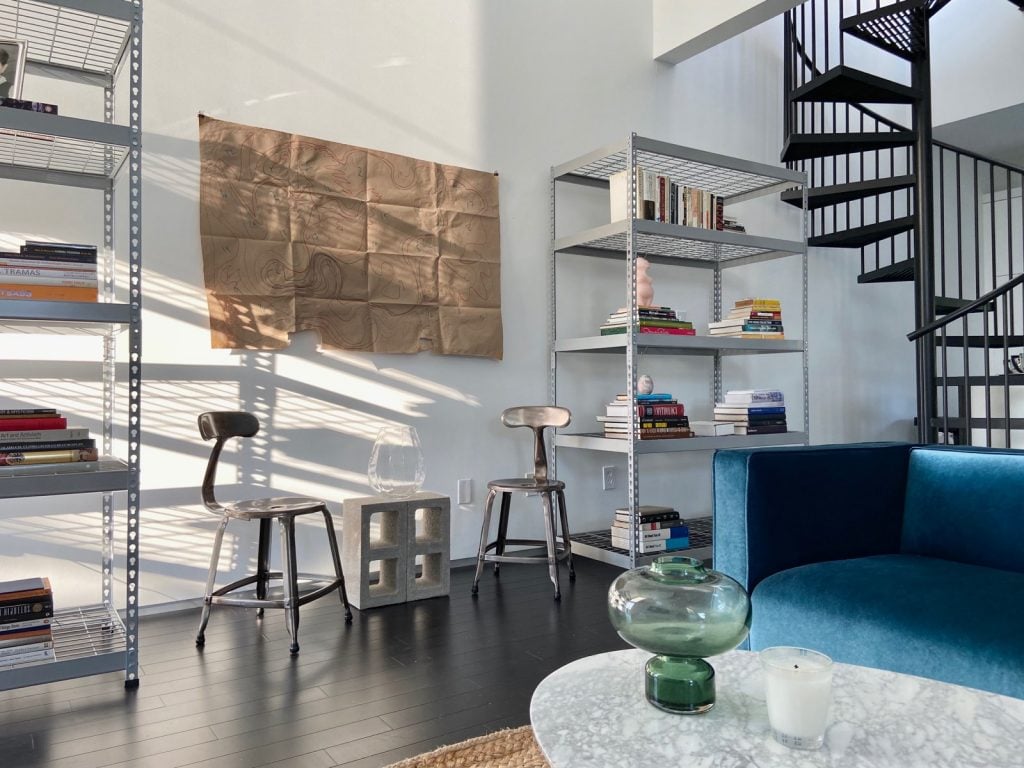
Carolina Alvarez-Mathies’s Dallas townhouse, with Tripa Chuca game on the wall, from an event hosted by artist Guadalupe Maravilla. Photo by Carolina Alvarez-Mathies.
Are these any causes you support that you would like to share? If so, what, and why is it/are they important?
I am on the advisory board of Y.ES Contemporary, a nonprofit that creates opportunities for Salvadoran contemporary artists working in the country and in diaspora. Being a young Salvadoran woman is something I am extremely proud of. I come from a tiny country with a great deal of talent. It fills me with great pride to see fellow Salvadorans and Latinx arists take up some much deserved space in the art world.
What is your guilty pleasure?
Casa Dragones’s new Barrel Blend and a friendly round or two of black jack with family friends I have been quarantining with.
What’s going on in the kitchen these days? Any projects? And triumphs or tragedies?
Mastering my mother’s recipe for île flottante.
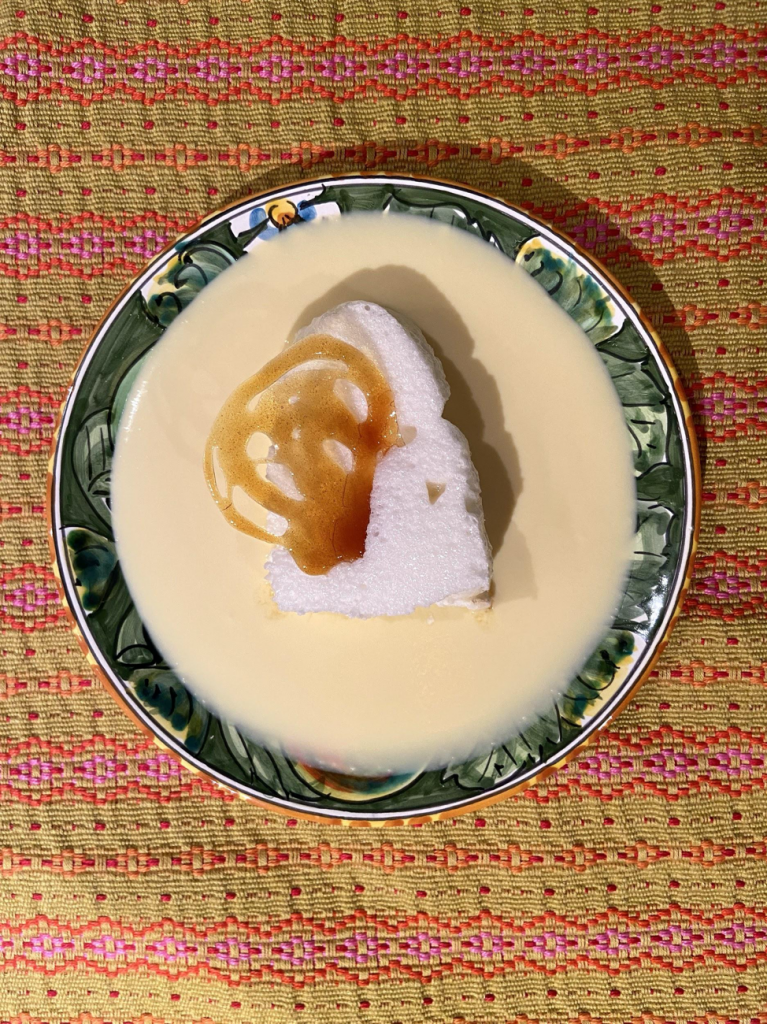
Carolina Alvarez-Mathies’s mother’s recipe for île flottante. Photo by Carolina Alvarez-Mathies.
Which two fellow art-world people, living or dead, would you like to convene for dinner, and why? Bonus: Where would you want the dinner to be, and why?
My friend José Castañal, director at Galerie Thaddaeus Ropac in Paris, has a killer dining room in Madrid designed by Guillermo Santoma—it was love at first sight for me. We got to chatting about our ideal dinner there and landed on summoning the spirit of legendary Mexican artist Julio Galán to join us for a Surrealist dinner recreating dishes from Dali’s Les Diners de Gala, especially the Bush of Crayfish in Viking Herbs.